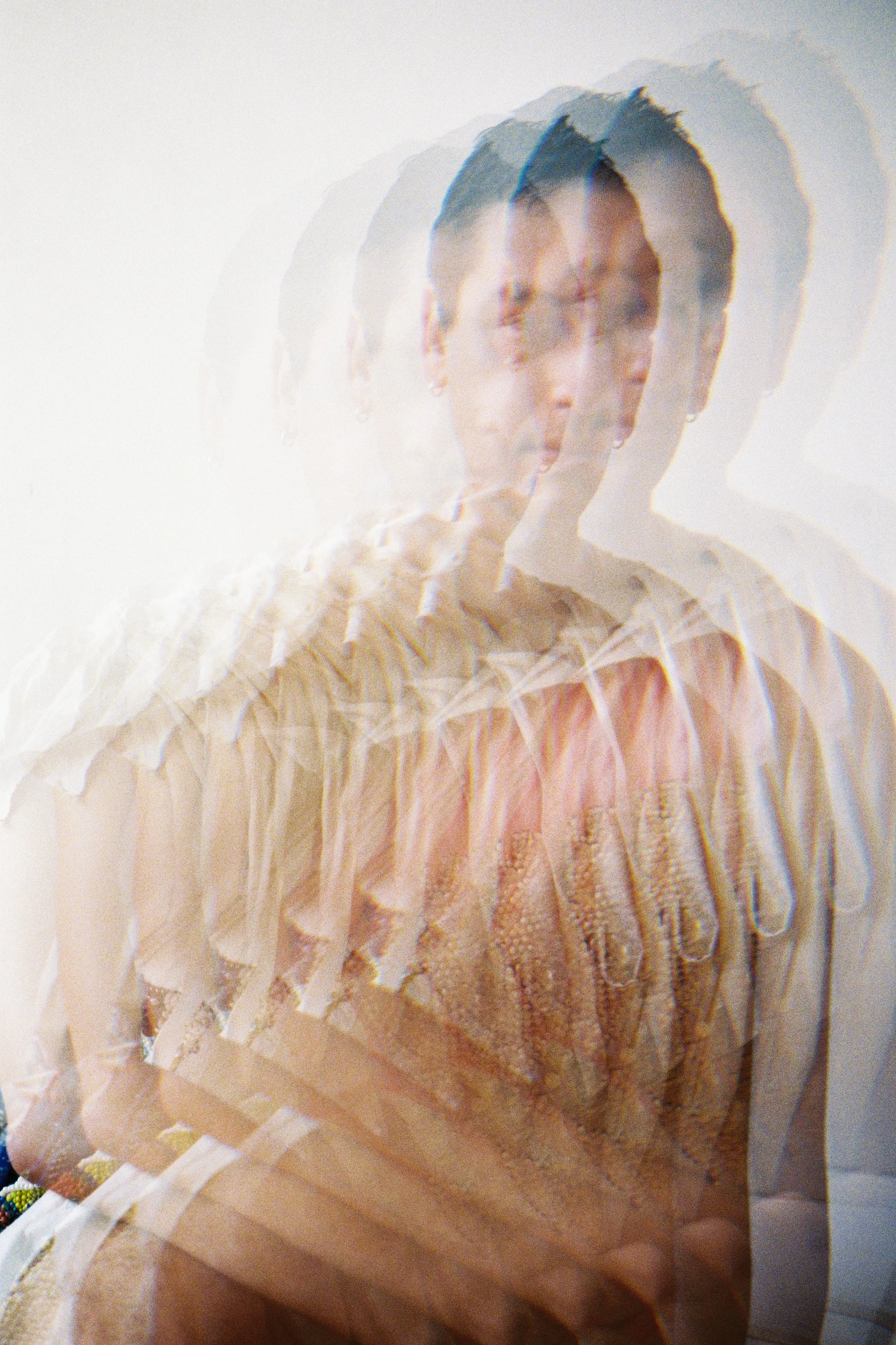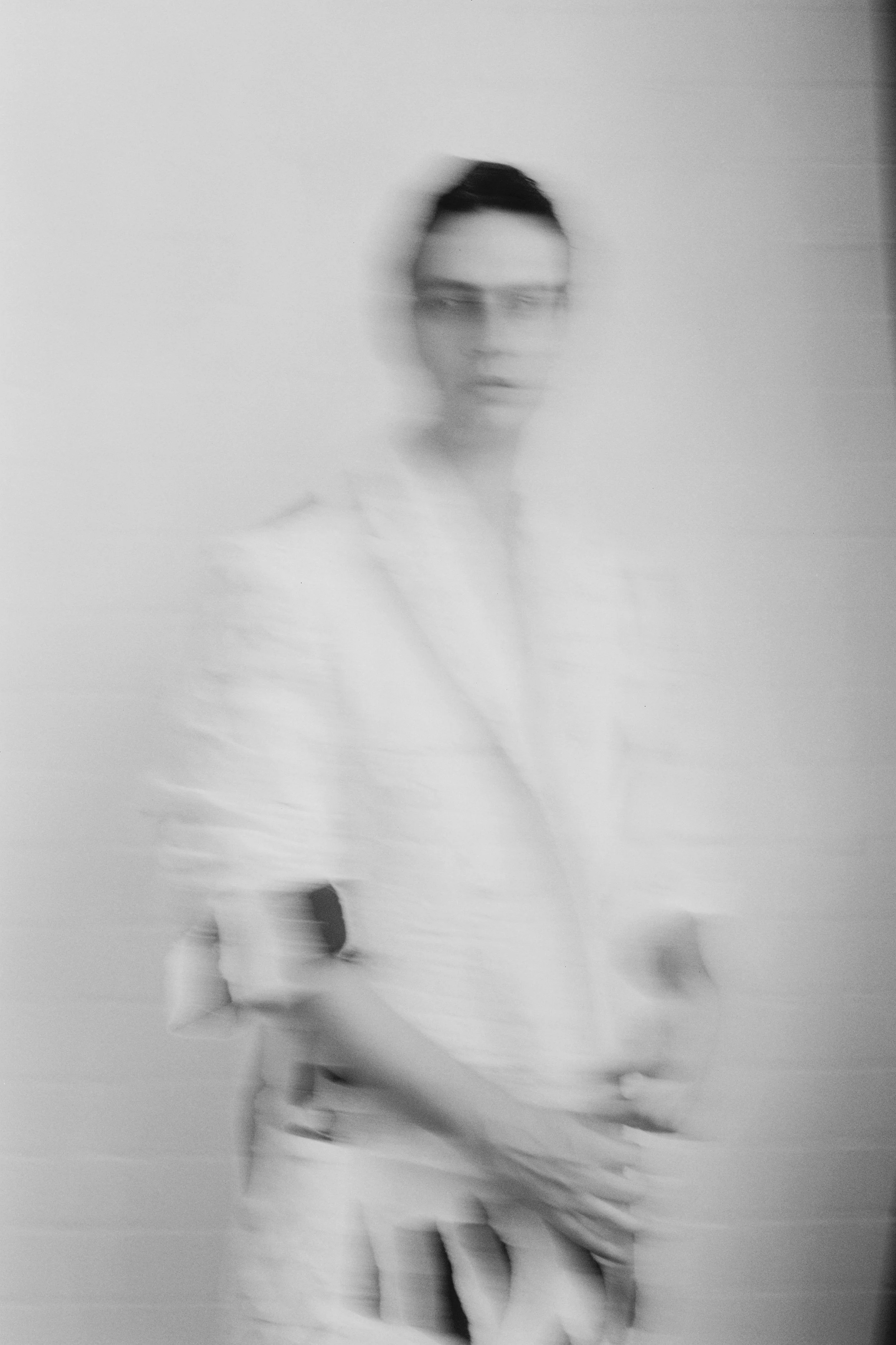Jordan Gogos on Life as an Episode of RHOBH
Photography by J Davies
Hailing from Eora/Sydney, Jordan Gogos is a multidisciplinary artist whose work sits at the crossroads of art, design and environmental sustainability. His creative ethos centres around controlled chaos – from the sleek yet brutalist approach to the objects and furniture he crafts, to the vibrant hues of his clothing label, Iordanes Spyridon Gogos. The artist’s creations are driven by a love for disruption and a strong commitment to fostering a more sustainable future in both the fashion and design industries.
For this interview, A-M Journal invited 10 creatives – all of whom have collaborated with Gogos – to ask him a series of questions relating to his life, creative practice and dream scenarios.
Byron Spencer: What song plays in the trailer for the Jordan Gogos film, and why?
A mix of Work Bitch by Britney Spears, Shut Up Bitch by Lil’ Kim and I Don’t Think So by Kelis… They were the first three saves on my Spotify that feel authentic. The rest of my saves would have been influenced by others, and I want the trailer to be as real as possible.
Minky: If your life were a movie, what would the synopsis be?
I think if I sub my name into any RHOBH [The Real Housewives of Beverly Hills] episode synopsis, it would be relatable. For example, at random, Season 12, Episode 3: Jordan invites his friends to the desert for the launch of his new store; Jordan apologises to Dorit for seeming unsympathetic following her traumatic home invasion.
Sebastian Goldspink: You use the word 'turbo' a lot as a descriptive – what does it mean to you?
Turbo, to me, is making something non-literal, unrealistic and even unrelatable. A bit like when you’re casually driving, and a car flies past you at a speed you’d never drive. It’s taking something to a level of risk with a fine level of control. Many projects feel ‘turbo’ because I know I can’t opt out – I have to keep going, and slamming the brakes would only make me swerve off the road.
Daniel Stricker: I remember you loving E-Type (the Swedish dance group from the ’90s) when we were working together, and then to be honest I got kind of obsessed with them, and then there was Gummibär. What do you think it is about European dance music that you love so much, and does it inform your work?
I love any bop that you had to download on a Motorola mobile for $8+ as a ringtone – I think that made them addictive. They are chaotic and random, and the lyrics are so dramatic. In my first show, I played Heut’ Ist mein Tag by Blümchen, which translates to ‘Today is my day’, on repeat; it evoked a lot of joy, but also a feeling of flying.
Ramesh Mario Nithiyendran: I've been thinking a lot about how we as artists may distinguish our sense of selves from our work. I often feel like my self-esteem and even identity pivoted largely around my studio practice. What other interests or passions do you have beyond fashion and creating? Do you feel it's important to maintain distinct interests, and why?
I don’t know if I have totally reached the point of separating my studio life from my personal life (yet). I always say to myself, “After ___ is finished, I’ll start focusing on myself”, but before it’s finished, I’ve already launched into a new project and created a new objective. It’s a difficult cycle to get out of.
J Davies: You have such an eclectic style – who would you love to dress that you haven't already, and why?
I’ll never not say Britney Spears as my answer. I don’t even think I need to explain why.
Midori Goto: What does wastage mean to you, and how does that play a role in your methods of creating?
This is a loaded question because waste takes on so many forms of meaning. If I had to simplify my answer, I would say it's material, matter or objects that didn’t receive any TLC or creative solutions. I personally use ‘waste’ in my practice as the basis for colour palettes, or to inform the next design or art piece. I enjoy the structure and limitations it imposes and the creativity and problem-solving required to realise a final work.
A-M Journal: You fuck with a lot of different mediums and artistic genres – fashion design, furniture design and fine art, to name a few. Do they all represent a singular practice for you, or do they inform each other? If so, how?
They all merge into one but, at the same time, forcefully push away from each other. I set parameters for each medium/genre. For example, when creating an artwork, I push different limitations such as weight or compression, while in fashion I explore form or adjustability.
Akira Isogawa: What is your proudest moment?
When my 12-year-old brother Bailie said he wanted to be like me.
Jenny Kee: When are you going to do a capsule of ready-to-wear clothes with Akira? I would like to see a collaboration between the two of you producing a sustainable range.
I think by the time this is being read, the collection would have already been released and, if we’re lucky enough, sold out!




